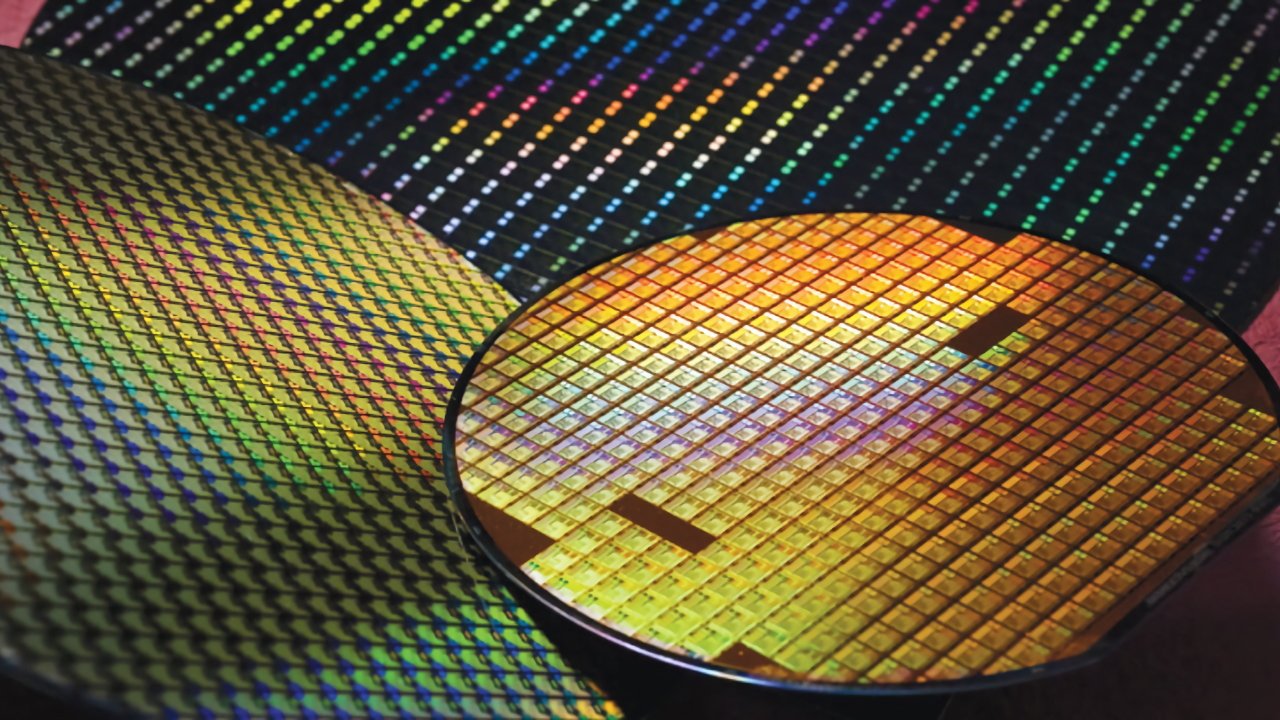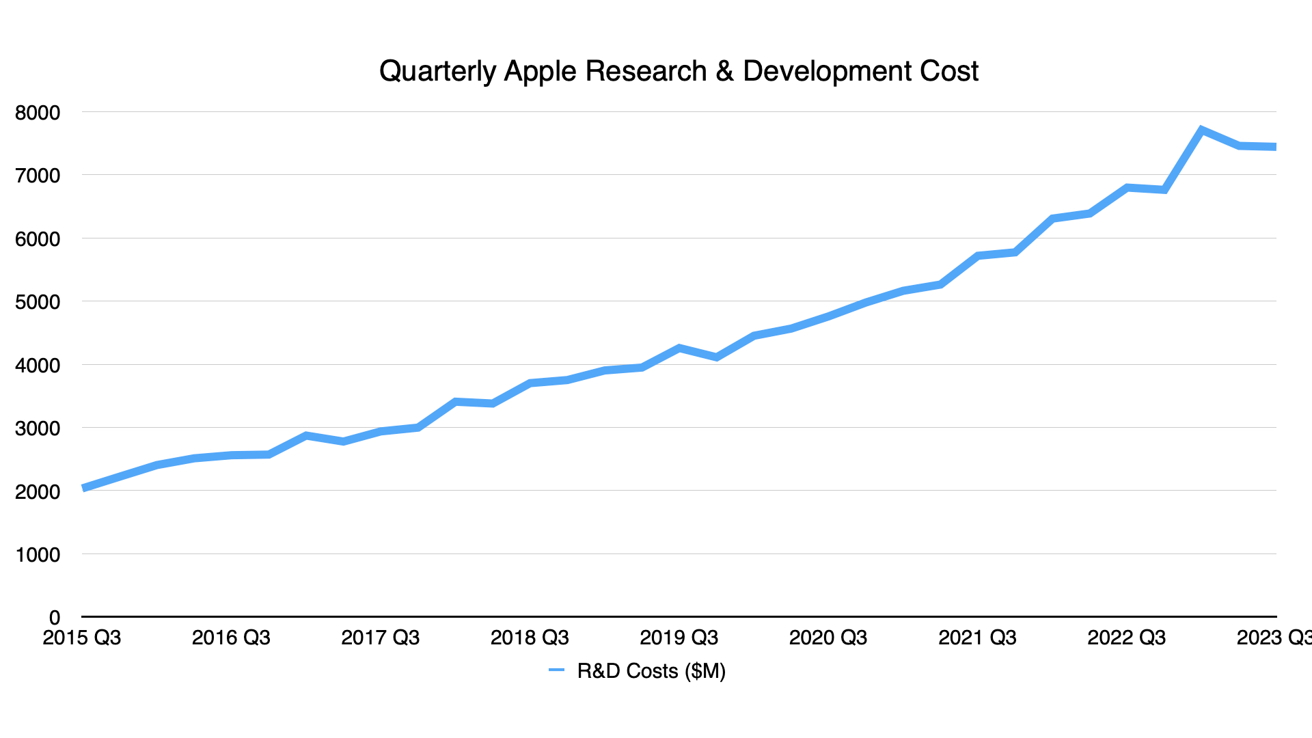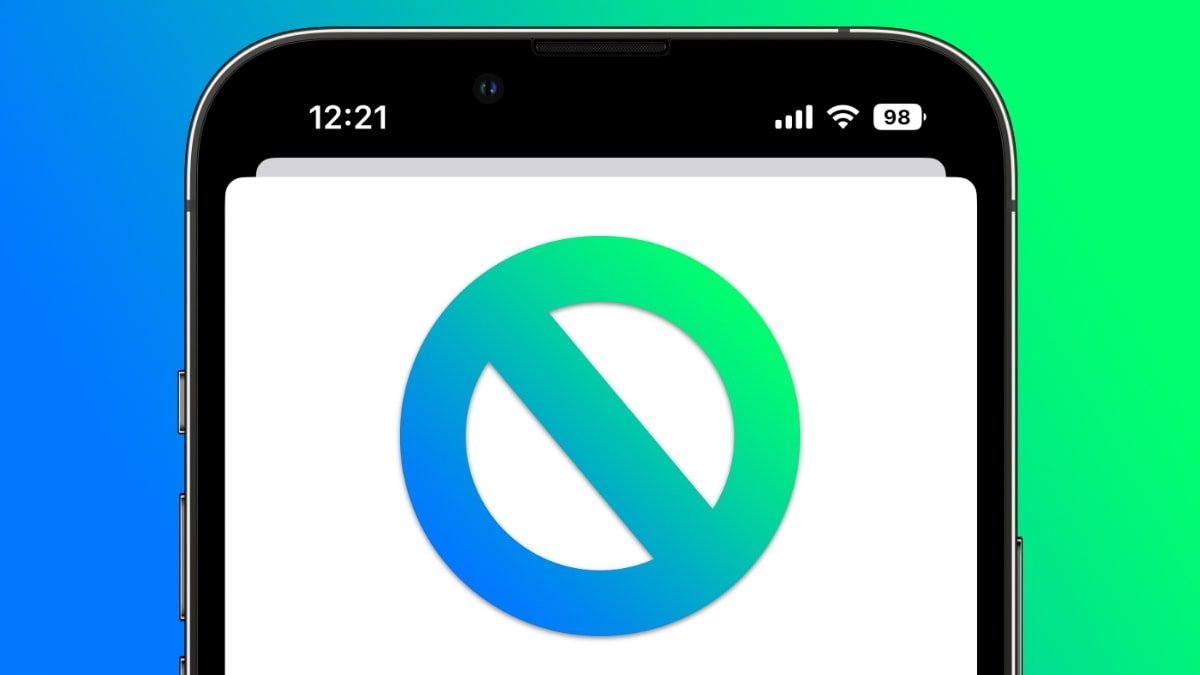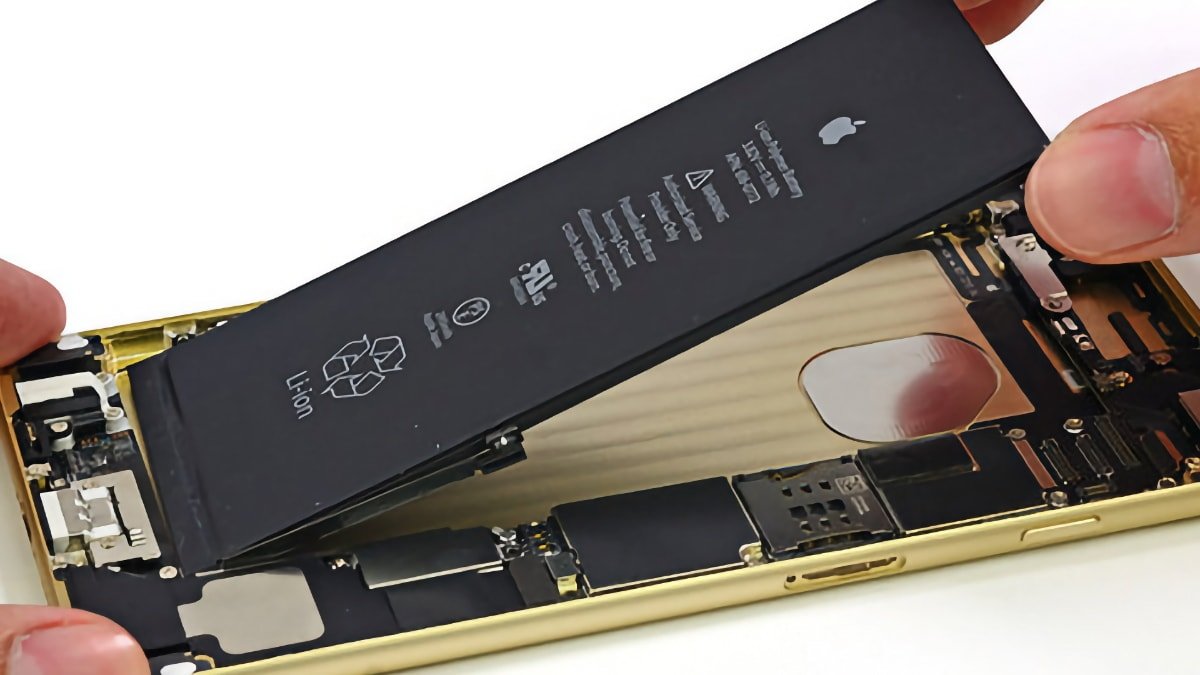AppleInsider · Kasper's Automated Slave
About
- Username
- AppleInsider
- Joined
- Visits
- 52
- Last Active
- Roles
- administrator
- Points
- 10,972
- Badges
- 1
- Posts
- 66,634
Reactions
-
Apple has 'sweetheart deal' with TSMC that saves it billions of dollars
TSMC's new 3nm manufacturing process has around a 30% failure rate but under exclusive terms, the company only charges Apple for working processors.

Processors are made in wafers. (Source: TSMC)
Apple has long had what its COO Jeff Williams has described as an "intense" relationship with TSMC. Now a new report from The Information claims that this relationship is unique out of all of TMSC's other clients, and all other processor manufacturers too.
Specifically, TSMC does not charge Apple the complete cost when it produces a wafer containing hundreds of processors. Instead, it only charges the company for what The Information says are referred to as "known good dies."
Ordinarily, the price difference is not statistically significant because typically some 99% of processors on a TSMC wafer are good. But at present, TSMC is only seeing between 70% and 80% success rate with its new 3nm processor, which it began mass production of in December 2022.
That will improve, but as well as Apple profiting by not paying for failed processors, so TSMC profits, too.
It's previously been reported that Apple has bought out TSMC's 3nm production capacity. production capacity. But The Information reports that TSMC is able to develop newer technologies specifically because Apple is willing to order new processors early, and in volume.
So Apple is helping fund the development of 3nm processors. Once the failure rate improves, and TSMC's capacity increases, the company will be able to sell 3nm processors to other companies who do not have such a sweetheart deal.
It's been estimated that moving to a 3nm manufacturing process means that the forthcoming iPhone 15 could be 35% more power efficient because of the new technology.
Neither Apple nor TSMC have commented publicly.
Read on AppleInsider

-
Tim Cook confirms that Apple has been working on generative AI for years
Apple spent $22.61 billion on research and development through 2023, and CEO Tim Cook confirmed beyond a shadow of a doubt that part of that expenditure is because the company is working on generative AI.

Apple AI research is underway
Many pundits have said Apple is behind in AI, specifically because they do not have a chatbot or answer to tools like Google Bard. However, it seems Apple AI has been being developed for years within the company.
According to a report from Reuters, Apple's growing spend in research and development can be tied to developing AI technology. The publication received a statement from Apple CEO Tim Cook on the matter.
"We've been doing research across a wide range of AI technologies, including generative AI, for years. We're going to continue investing and innovating and responsibly advancing our products with these technologies to help enrich people's lives," Cook said. "Obviously, we're investing a lot, and it is showing up in the R&D spending that you're looking at."
Apple spent $22.61 billion across the fiscal year 2023 on R&D so far, which is reportedly about $3.12 billion higher than this point in the previous year.
Apple is rumored to be working on a ChatGPT-like product internally, though it may never see the light of day. Mark Gurman suggests some kind of Apple AI app could arrive in 2024, though Ming-Chi Kuo believes Apple is further behind than that.
Apple R&D spending over time
Despite these claims and rumors, Apple has already pushed out products running on advanced machine learning models like the iPhone's camera, Siri, and more. An update in iOS 17 brings a transformer language model to the autocorrect system, which is the same base technology used in AI chatbots.
While Apple may not announce a SiriGPT anytime soon, if ever, expect more advancements from the company in the area across its platforms. Many expect the developer tool Xcode could be Apple's next target for adding an AI tool.
Read on AppleInsider
-
China mulls mandatory 'minor mode' on iPhone to curb youth Internet abuse
Apple, other smartphone makers, and app developers may have to introduce limits to how Chinese children can use devices like iPhone and the apps to run them, if a new proposed law is put into effect.

Restricting content for kids
A draft regulation put forth by the Cyberspace Administration of China (CAC) would make a "minor mode" mandatory for smartphones and app stores, imposing sharp limits on how long and when children can use devices, depending on their age. The law would further restrict what apps kids could download, making parental permission mandatory in numerous instances.
With minor mode activated by a parent or guardian, children under the age of 8 would only be allowed to use devices for 40 minutes at a stretch without additional permission, according to a draft of the law published on the CAC website. Between 8 years and 16 years of age, children can use devices for up to one hour.
Ages 16 through 18 would be able to use devices for two hours if the law is enacted. The law also spells out rules for frequent rest reminders, and forbids kids from using devices between 10 PM and 6 AM.
The new law offers parents the ability to override most of the "minor mode" settings, and also spells out the government's expectations for content providers, app distribution platforms and network service providers to maintain compliance with the new regulations. The law stops short of explaining how regulators expect all parties to do so, however, and it doesn't indicate what will happen to businesses that don't comply.
The new law builds on an existing "Youth Mode" requirement the CAC first put into place in 2022 which sharply curtailed the amount of time young people can spend online and play video games. The regulations were put into place following closer government scrutiny of how young people are using online devices, amidst public concern over their possibly detrimental effects on children's mental and physical health.
Apple already provides extensive parental controls for its devices, to help parents impose limits on screen time, which apps can be accessed and when, and with whom children can communicate. The features use iCloud to propagate across devices and has been problematic for some in the past, supposedly fixed in the release of iOS 16.5.
A recent report suggests that the Screen Time proliferation bug continues to exist in new iOS builds, including beta releases of iOS 17.
In a report on Wednesday, Reuters said that shares in Chinese tech firms took a sharp hit following the announcement, as investors expressed concern over how businesses will comply with the additional regulations.
The CAC's draft guidelines are open to public feedback until September 2nd.
Read on AppleInsider
-
iPhone is never going to get an easy battery replacement door
A law is approaching in the European Union that requires user-replaceable batteries -- and one Apple exec is clear that it doesn't mean that a battery replacement door is coming to the iPhone.

Taking a battery out of an iPhone
In July, the European Union announced that it is adopting a new regulation on batteries and waste batteries. It sets stringent due diligence rules for operators who must verify the source of raw materials for batteries placed on the market.
The new regulation applies to all batteries, encompassing waste portable batteries, electric vehicle batteries, industrial batteries, and batteries used for light transport, such as electric bikes, e-mopeds, and e-scooters. It's designed to address the environmental impact of batteries at every stage of their life cycle.
And, it's been interpreted to mean that the back-panel of an iPhone must be a door that can be popped off with a thumb.
That's not the case. Not even close.What the European battery law actually entails
The law is clear in some aspects, like what percentage of a battery must be recyclable. It is -- probably intentionally -- very vague in others.
There are seven key provisions to the law, and most of the attention is on the second one.- A compulsory carbon footprint declaration and label for certain types of batteries.
- Designing portable batteries in appliances so consumers can easily remove and replace them.
- A digital battery passport for certain types of batteries.
- A due diligence policy for all economic operators, except for SMEs.
- Stricter waste collection targets for portable and LMT batteries.
- Minimum levels of materials recovered from waste batteries.
- Minimum levels of recycled content from manufacturing and consumer waste for use in new batteries.
Where things are getting hung up in Internet discussion about the matter is "Designing portable batteries in appliances so consumers can easily remove and replace them.""Easily remove and replace" batteries doesn't mean a door
A key consideration in the new law is a clause about waterproofing. The law says that there is an exemption to the law for any piece of electronics that are "specifically designed to be used, for the majority of the active service of the appliance, in an environment that is regularly subject to splashing water, water streams or water immersion."
It's not clear how this will apply to smartphones. Arguably, human beings must be near or consume water frequently -- but this aspect of the law seems to apply more to underwater cameras and the like.
Another aspect of the battery replacement law is availability of batteries for seven years after a phone's release. Apple already meets this with the Self-Repair Program parts availability, and has for some time.
In all likelihood this aspect of the law will impact lower-end Android phone manufacturers more heavily. It's also not clear what the impact will be on Samsung, given that they have an entire range of smartphones from sub-$100 to thousands, and the service chain can be questionable top-to bottom.
Additionally, the battery law is vague about what tools are required for a user to replace a battery. The law never states, anywhere, that a door to remove the battery, like in a flip-phone, is required."A portable battery should be considered to be removable by the end-user when it can be removed with the use of commercially available tools and without requiring the use of specialized tools, unless they are provided free of charge, or proprietary tools, thermal energy or solvents to disassemble it."
Jeweler's screwdrivers and even Torx bits are common. So common in fact, that US dollar stores often have both. Also common are the little wedges of plastic, called "spudgers" in the trade.
And, the law acknowledges this and explicitly allows these kinds of tools for repair.
Heat isn't strictly required to remove a battery, nor are solvents. Apple has shifted to a pull-tab adhesive, not dissimilar to a 3M Command Strip to hold iPhone -- and Mac laptop -- batteries in place.
Enough of what the law says, and how the Internet is misinterpreting it. Apple's Senior Vice President of Hardware Engineering John Ternus made some statements that are clearer than normal for Apple on the matter.Where Apple stands on the EU battery law
Ternus was interviewed by a German YouTube channel recently. He danced around the subject somewhat, but the intent is clear.
"There may be a slight conflict between durability and maintainability," Ternus said. "You can make an internal component more maintainable by making it discrete and removable, but that actually adds a potential point of failure."
He also directly references the waterproofing caveat in the EU law in the interview."Our iPhones are IP68 rated, so they're incredibly water resistant. We always get these great stories when customers tell us how they accidentally dropped their phone in a body of water and it took them two days to get it out and they are so excited because it still works.To get this level of water resistance, there are a lot of high tech adhesives and sealants to make everything waterproof. But of course it makes the opening process a little more difficult. So there is a balance."
He's less direct about the Self-Repair Program. It's still clear that Apple's focus is on that, and not a mass-revision of iPhone engineering to go further than what the EU law requires.
"We take a truly data-driven approach to maintainability," he added. "We want to focus on making sure our customers have easy access to repairing things that are most likely to need repair."So, what's Apple going to do about the EU battery law?
Apple has already been moving for years to accommodate this law. As it stands, it appears that Apple already meets the requirements.
In the interview, Ternus did note that the company revised the back-glass replacement process, and as we mentioned, it has shifted to the pull-tabs for battery replacement across the board.
This law has been grinding through the gears of legislative bodies for some time. Partially to deal with that, and to deal with impending FTC regulation in the United States, Apple launched the Self-Repair Program so users have (some and limited) access to parts and repair procedures.
Notably, this does not include component-level schematics down to circuit traces and resistors, and likely never will.
The iPhone repair kit loan is borderline-ridiculous. The kit arrives relatively fast in about two days to arrive and comprises of two large Pelican-branded cases. Combined, they weigh in at nearly 80 pounds, and have a wide array of gear, bonding materials, clamps, and so forth.
Nearly everything in this kit is not required, and it's not a mandatory rental. Even when batteries were glued down and harder to replace than they are now, shops the world around were replacing them with a set of screwdrivers and a small plastic chip to break the iPhone seal.
Apple knows this. So does the EU. The EU also knows that going into an Apple Store for a battery replacement is a good balance of price and convenience, versus trying it yourself.
So, we don't think Apple is going to make any changes that it hasn't already made to its service and support for iPhone or Mac batteries. Most Android manufacturers outside of the FairPhone and similar, on the other hand, are going to have a harder time with it.
Ultimately, it will come down to the lawyers, like it always seems to.
Read on AppleInsider
-
Sonnet's new dock lets M1 Mac owners have three 4K displays
Sonnet's Echo 13 Triple 4K Display Dock offers three-screen support for a M1 Mac, with it also providing legacy ports too.

Introduced on Monday, the Sonnet Echo 13 Triple 4K Display Dock follows on from the Echo 11 and Echo 20 as ways to add more ports to your Mac or MacBook Pro. As the name indicates, its main feature relates to how many displays it can handle.
On the back of the dock are a trio of port pairs, with three each of DisplayPort and HDMI connections on offer. As they are paired, users can select which port from each pair to connect to, depending on their needs.
For owners of M1 and M2 Macs that have to deal with support for a low number of displays, the inclusion of DisplayLink means those limited Macs can work with more displays than Apple's limit. That means even an M1 MacBook Air with built-in support for one external display can now go up to three.
The dock can support up to three 4K displays at up to 60Hz, and they can be mixed between the HDMI and DisplayPort connections.
The port selection at the back includes four USB 3.2 Gen 1 Type-A ports, a gigabit Ethernet port, and a USB-C connection to the host computer that can also handle 100W of power delivery.
At the front is another USB 3.2 Gen 2 Type-C charging port that offers 20 Watts, separate headphone and microphone jacks, and a fast UHS-II SD card slot.
The Echo 13 Triple 4K Display Dock is available now from Sonnet, priced at $239.99.
Read on AppleInsider


